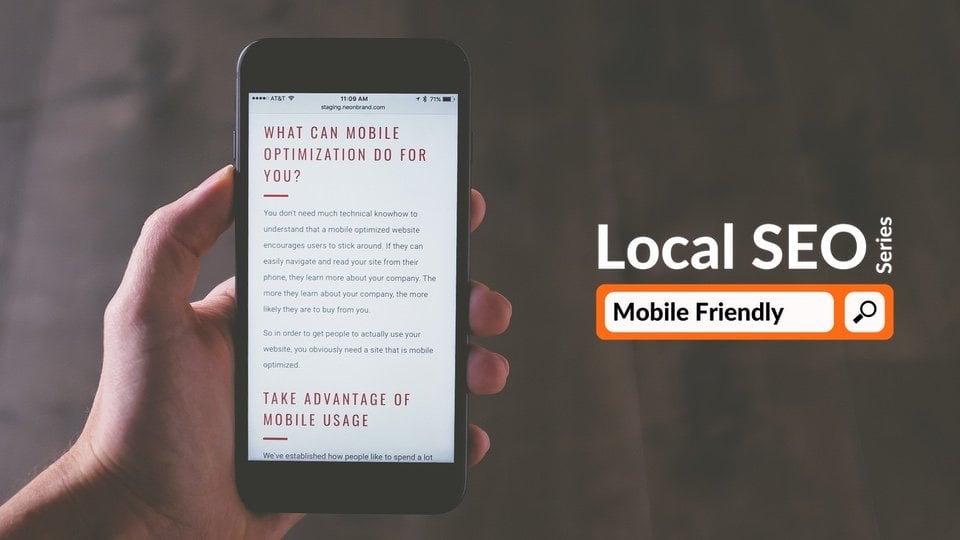Dominate Search Engine Result with Next-Level Mobile Optimization Techniques
Dominate Search Engine Result with Next-Level Mobile Optimization Techniques
Blog Article

The Ultimate Guide to Mobile Optimization: Methods for Enhancing Site Efficiency on Smartphones and Tablets
The strategies for boosting site efficiency on mobile systems go beyond mere adjustment; they include a thorough method that involves responsive style, speed optimization, material strategies, and individual experience enhancements. By delving into the complexities of mobile optimization, businesses can not just satisfy individual expectations yet additionally stay in advance in an affordable digital landscape.
Significance of Mobile Optimization
Mobile optimization plays an essential function in enhancing customer experience and driving conversion prices in the ever-evolving digital landscape. With the raising use of smartphones and tablet computers for browsing the net, making sure that sites are maximized for mobile phones has come to be critical for services - Mobile Optimization. A mobile-optimized website not just adapts effortlessly to different screen dimensions but additionally loads swiftly, offering customers with a smooth and enjoyable searching experience
In today's fast-paced world, customers expect immediate accessibility to information on the go. An internet site that is not optimized for mobile tools risks losing possible consumers due to reduce loading times or a poor interface. By buying mobile optimization, companies can accommodate the needs of their mobile audience, causing greater engagement and enhanced conversions.
In addition, search engines like Google focus on mobile-friendly internet sites in their rankings, making mobile optimization necessary for enhancing exposure and bring in natural website traffic. Mobile Optimization. In general, the value of mobile optimization can not be overemphasized, as it straight influences customer satisfaction, conversion rates, and general service success in the electronic world
Responsive Layout Strategies
Applying receptive style methods guarantees that sites dynamically adjust their layout and web content based upon the individual's gadget screen dimension, giving a regular customer experience across various systems. One of the most common approaches made use of in responsive design is creating fluid grids that permit material to resize proportionally to the screen dimension. This makes sure that aspects on the webpage keep their family member spacing and arrangement, maximizing the checking out experience for individuals on different gadgets.
Furthermore, using adaptable images that can scale with the dimension of the viewport assists prevent photos from being cropped or misshaped on smaller displays. CSS media inquiries play an important role in receptive design by permitting designers to apply certain styles based upon the device characteristics such as screen width, height, and positioning. By leveraging media inquiries, web sites can adapt their format and layout to suit smart devices, tablets, and desktop computer screens effortlessly.
Incorporating receptive design methods not just enhances individual experience but likewise adds to enhanced internet search engine rankings, as internet search engine like Google prioritize mobile-friendly web sites in their mobile search results page. By embracing receptive layout, sites can satisfy the varied needs of individuals accessing web content useful content on a selection of devices, eventually driving involvement and conversions.
Speed and Performance Optimization

One secret technique is maximizing pictures and multimedia content to lower data sizes without endangering high quality. Compressing photos, leveraging modern photo formats like WebP, and careless loading offscreen images are reliable approaches to speed up lots times (Mobile Optimization). Minimizing HTTP requests, leveraging internet browser caching, and decreasing web server reaction times are crucial steps in boosting performance.
Applying a content shipment network (CDN) can also significantly improve website rate by dispersing content throughout numerous servers internationally, lowering latency for customers accessing the imp source website from different places. Focusing on crucial above-the-fold web content and deferring non-essential scripts can additionally boost perceived performance. By concentrating on rate and efficiency optimization, websites can provide a smooth and enjoyable user experience on mobile gadgets.
Mobile-Friendly Material Approaches
Mobile-friendly material techniques involve customizing the discussion of details to fit the smaller screens and on-the-go nature of smartphone and tablet computer customers. Furthermore, breaking up content right into much shorter paragraphs and making use of bullet factors can assist improve readability and make it easier for customers to take in info quickly.
Including interesting visuals, such as pictures and videos maximized for mobile viewing, can also boost the general individual experience. These visuals should matter, high-grade, and tons rapidly to stop customers from wearying. In addition, integrating interactive components like tests, polls, or studies can boost customer interaction and urge active engagement.
Customer Experience Enhancements
Building on the structure of mobile-friendly content approaches, improving customer experience entails enhancing every touchpoint to guarantee smooth interaction and satisfaction for mobile users. One essential aspect of improving customer experience on smart phones is making certain fast packing times. Customers expect web sites to fill promptly on their mobile phones and tablet computers, and any kind of visit their website delays can cause frustration and boosted bounce prices. Implementing responsive style is an additional key consider enhancing customer experience. Receptive layout ensures that sites adjust to numerous display dimensions and resolutions, providing a consistent and easy to use experience across various gadgets.
Along with speed up and receptive style, simplifying navigation is important for a positive user experience. Clear and instinctive navigating food selections, famous search bars, and tactically put call-to-action buttons can help users conveniently locate what they are trying to find on a mobile site. Optimizing forms for mobile customers by decreasing the variety of fields and utilizing auto-fill features can additionally enhance the overall user experience. By concentrating on these customer experience improvements, web sites can efficiently engage and keep mobile visitors.
Conclusion
To conclude, mobile optimization is vital for enhancing internet site performance on smartphones and tablet computers. By executing receptive style techniques, enhancing rate and performance, developing mobile-friendly material, and boosting user experience, organizations can efficiently get to and engage with their mobile audience. It is essential for web sites to adjust to the enhancing mobile use trends in order to stay affordable in the digital landscape.
Report this page